ECC Mentor Corner Roundup 2021
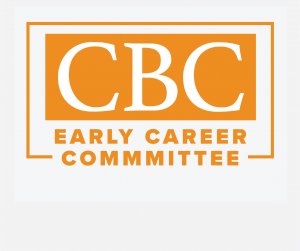
Featured Mentors: Phoebe Yeh, Tim Murray, Jennifer Delaney, Lucas Wetzel, and Dawn Ryan

Issue: February Newsletter
Mentor: Phoebe Yeh
Position: Vice President / Publisher
House: Crown BFYR / Random House Children’s Books
What was your first job in publishing?
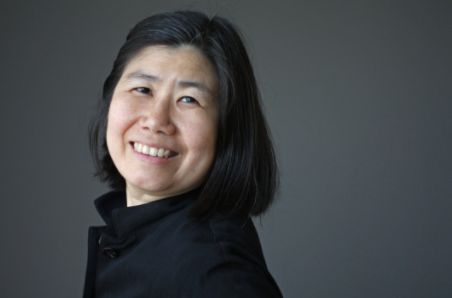
I was an English major who had been out of college for a year teaching ESL in Taipei City, and really wanted to get a job in children’s publishing. It had to be children’s publishing, thanks to a children’s literature course I had previously taken with the great Jane Yolen! I accepted an editorial assistant position with SeeSaw Book Club at Scholastic, and had many of the same job responsibilities as editorial assistants do today. However, I also had to read every single picture book that SeeSaw offered, which was an invaluable experience as I was developing my own taste and editorial skills.
What was your career path like getting to your current role?
I held pretty much every editorial assistant position at Scholastic, then ended up an editor at SeeSaw and was allowed to acquire early on. This is how I came to edit The Seven Chinese Brothers, another picture book retelling of the Chinese folktale but with far more inclusive, empowering illustrations and authentic plot elements than its 1938 predecessor, The Five Chinese Brothers. At the time I was only working on picture books, but did reader’s reports for Brenda Bowen, who was an editor working on middle grade and young adult books. Later, I had the opportunity to work on trade books at Scholastic and was one of two people responsible for editing the Magic School Bus series. (If you’ve ever read the books or watched the show, there’s a character named Phoebe, who was named after me!) Eventually, I got to the senior editor level and knew I would need to leave in order to learn new things, which is how I ended up at HarperCollins managing a larger team.
At HarperCollins, I was able to work on lots of different, powerful projects with various nonfiction and debut writers. The first young adult novel I edited was Monster by Walter Dean Myers, and after that I was working on a book a year with him. I also edited the illustrated middle-grade series The School for Good and Evil, and since then middle grade (especially illustrated middle grade) has held a special place in my heart.
Throughout this time, I kept in touch with Barbara Marcus, who eventually approached me with the opportunity to head a Random House Children’s book imprint. She also approached Emily Easton, as at the time I was working predominantly with middle grade, whereas Emily’s list was broader. Before starting at Crown I made it clear to Barbara that working with diverse authors and highlighting diverse voices in children’s books was one of my main priorities, of which she was supportive. Since then, I’ve gotten to partner with We Need Diverse Books, the Smithsonian, Just Us Books, and more.
What advice would you give to those who are either just starting out or are in their first few years in publishing?
Keep reading! It may not be immediately clear how the books you’re reading outside the job will impact your career, but it’s important in tailoring your own literary tastes and knowing the market. Anyone, especially anyone new to kidlit, can have a great idea—but no groundbreaking idea happens in a vacuum. It takes time and work.
What advice would you give to BIPOC who are new to publishing?
You probably know this all too well by now, but it won’t always be easy or comfortable, and it can often be frustrating—especially when you’re the only POC in the room. But you don’t have to be alone—finding a mentor or network of people of color in publishing is more important than ever and so much easier to do now with social media.
Issue: April Newsletter
Mentor: Tim Murray
Position: VP Sales
House: Little Bee Books
What brought you to publishing and what was your first job?
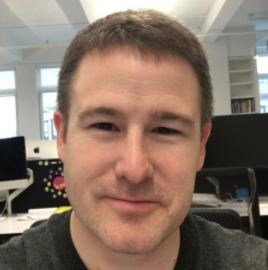
A love of reading and books brought me to publishing. I never seriously considered working in any other industry.
My first job was in the special sales department at Simon & Schuster supporting gift reps that were selling our books mostly into mom & pop shops around the country.
What was your career path like getting to your current role?
Fun and exciting for sure! But more specifically, my path started with five years at Simon & Schuster, which included a few promotions, next eight years at DK that included another couple of roles with increasing responsibility, then back to S&S for a sales directorship. Worth mentioning that during this time I also went to graduate school at night for an MBA. I’m fortunate and grateful that I received help via tuition reimbursement from my employers at the time. I then joined a publishing tech startup called BookShout for three years to head their sales and marketing efforts. At the beginning of 2018, I started my current tenure with Little Bee Books.
What advice would you give to those who are either just starting out or are in their first few years in publishing?
Work hard. Lace em’ up each day with intent. Be a sponge for knowledge about all facets of the business, learn to listen and listen to learn, remain teachable. Simultaneously, be confident and advocate for yourself, know your worth and enjoy what you’re doing.
How have you seen book sales change over your career? The past year? What do you think the future is?
Yes, a great deal of change for sure. Of course the rise of online sales, eBooks, and digital audio have been paradigm-shifting changes to how publishers help connect authors and illustrators with readers.
Pivots and reinventions of the traditional bookstore towards more localized and experiential business models, aided by the rise of social media, have also been exciting to watch.
This past year pandemic-related closures have certainly presented unique challenges for many booksellers. I’m very hopeful for these retailers that this chapter is coming to a close with the vaccine rollout. That said, with so many families finding themselves mostly at home this past year, we saw an increase in sales. With kid’s books, in particular, I think the uptick had much to do with parents, like myself, regularly seeking non-screen content to engage kids.
I think the future for publishing is bright and that in order to be so, it will ever increasingly need to be more friendly, diverse, and inclusive. I also don’t see any signs of human beings’ ancient love of telling and hearing stories slowing down. The incredible spectral utility of books, from mere entertainment to tools of learning, change, and course correction in humanity’s journey, should hopefully only continue to grow.
Issue: June Newsletter
Mentor: Jennifer Delaney
Position: Production Director
House: Charlesbridge
So, the first question is a bit of a two-parter—to start off, what brought you to publishing, and how did you end up working as a production director?
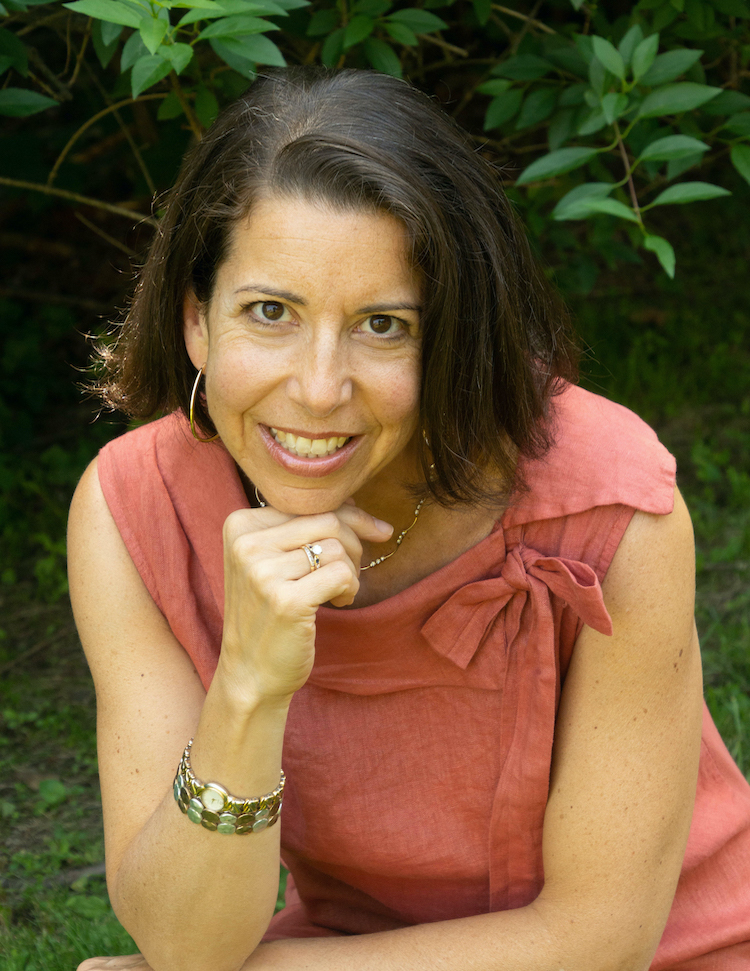
Get comfortable, because my path is a long and winding one! To begin with, I wasn’t much of a book reader. I am now, but in my past, I was more into magazines and I always had a love for children’s books. When I started college, I didn’t know what I was going to major in, so I basically took courses in a variety of subjects hoping something would pique my interest. My strengths were actually in math and science, but I didn’t particularly like those subjects. It wasn’t until I took a creative writing course and a drawing course that everything clicked. But SUNY Binghamton was more known for their science and math curriculums, and I knew that I would pretty quickly exhaust what resources they had in the writing and arts departments. However, by the time I had made that realization, it was already too late to transfer, so I ended up taking a year off.
It was during that gap year in Burlington Vermont that I got a job (one of the many part-time gigs I juggled in order to pay my rent) at The Vermont Times newspaper editing their calendar section. This was my first taste of publishing, and I was hooked. The job included tasks such as research, content development, proofreading, and paste-up design. I loved the variety, which I think is what over the years drove me toward production.
I ended up transferring to Connecticut College, and I designed my own major, since I now knew exactly what I wanted to do. It always amazed me that publishing is generally not a “major” even at liberal arts schools, so I pieced together the courses I thought would serve me well. I treated it more like a graduate program and focused my coursework on writing, editing, and illustration (in the form of photography and ceramics). For my senior project, I created a photo essay called, “‘Til Death Do We Part,” which included interviews and black and white portraits of couples who had been married more than 50 years. It was exhibited at the Cummings Art Center and was the first project I fully conceived, created, and produced.
My first full-time publishing job was with Discover Connecticut Magazine, and this is where I fell in love with producing printed pieces. The entire publishing team was just myself and the editor, Pam Starkey. I ended up handling the design and the production, as well as occasionally generating content, writing, and editing. I was entirely self-taught, and I learned whatever I needed to get the job done. I learned the ins and outs of printing, which I found fascinating. One of the things I also really liked about production is that it incorporated my strong math, business, and general organizational skills. Quoting manufacturing, negotiating pricing, managing schedules, and understanding the technical aspects of printing and binding, all relied on those basic skills.
My next job brought me to the Boston area, where I worked for Bob Adams, Inc., later known as Adams Media. I did production for three career-related magazines, and that was my first experience managing a staff. I loved it! I also had my first experience with a challenging manager, which taught me skills in navigating difficult professional relationships, which I would carry with me through much of my career. When I realized the magazine division was to be sold off to Kaplan, I started networking. A friend of mine had a relative working as a children’s editor at Little, Brown. I got an interview there and landed my DREAM job working as a production coordinator for the Children’s book division.
Children’s books have always been a passion of mine, so producing books for Little, Brown was the pinnacle for me, and I did that for about three years. However, I, unfortunately, was faced once again with a manager that was more concerned about her own reputation than my growth, and repeatedly undermined my ability to do my job. Thankfully, I had a very good relationship with her manager, and he saw promise in me that allowed me to pivot my career at the company. At this time, Little Brown was becoming more under the influence of its parent company, AOL Time Warner, and a position opened up for Reprints Manager of all of Time Warner Trade Publishing, which included Little, Brown Children’s and Adult, Warner Books, and Bulfinch (art and coffee table books). I desperately wanted to get out from under my current management situation and I saw this as the perfect opportunity. However, this job was very demanding and at quite a higher level, and although the senior manager believed in me, even he thought this was a stretch. But, I convinced him to give me a shot. The job had me juggling 400+ reprints at all times, and my first major task was quite the test. Oprah’s Book Club was just starting up—and some of her first picks were Little Brown books. It was all very top-secret, with code words and everything, and if anything leaked there was the danger of Oprah pulling out, leaving us with 700,000 copies we couldn’t sell. It was crazy busy, and super stressful at times, but I absolutely loved it!
In mid-2002, the decision was made to move the Boston offices of Little, Brown to New York to merge with Warner Books (later to be acquired by Hachette). This was just several months after 9/11, and I was about to have my first baby. It was a difficult decision, but I knew I didn’t want to raise kids in New York, and so it was time to leave Little, Brown.
About a year and a half later, itching to get back to work, I ended up working part-time for three different small independent publishers. They didn’t start all at the same time. I first spent about five years as part-time Production Manager at David R. Godine, Publisher, and then I added Nicholas Brealy part-time as well, and a couple of years later I also joined Applewood Books as a consultant. At the time, none of them could afford to have a full-time Production Manager, so I pieced them together. Applewood initially hired me as a consultant to institute production processes for them, and once I built those processes, then they asked me to join them to put them into practice. Also, while at Little, Brown, I had started a freelance book production business, which I continued over this time. I had a variety of clients, but my favorites were artists for whom I created high-end catalogs of their work, resulting in beautiful large-scale, hardcover, slip-cased, or custom boxed presentations that were often sold in galleries alongside their art.
During this time, self-publishing was really starting to take off. However, what I realized, from many of my freelance clients, was that there was a gap for those people who wanted professionally published books, but also wanted to maintain the creative control that self-publishing afforded. For many of them, who had other full-time work, learning what they needed to properly self-publish was a full-time job in itself. So, I saw an opportunity to bridge the gap between self-publishing and traditional publishing. To do this I started my own publishing company, JMD Publishing, LLC through which I created a co-venture publishing model. I created two imprints—Curly Q Press (children’s books) and Benna Books (art and coffee table books). In this co-venture publishing model, the authors of the works I acquired would fund the front end of the project, including the editorial, illustration, design, production, and manufacturing costs, and in return, they would earn a 55% royalty on sales, as opposed to the traditional 7-10% royalty. Through my relationship with Applewood Books, I facilitated national distribution, which gave these authors much greater sales reach, through all the major trade sales channels, than they ever could have self-publishing on their own. And, the authors were much more engaged in holding events and selling their books, in order to earn back their initial investment. The authors also owned their own inventory, since they had paid for the manufacturing, so any books they sold through their own networks and channels earned them full list price, with no distribution fees incurred. The creators and I worked very closely as a team, and I did everything I could to preserve their creative vision, while at the same time presenting their life’s work as a beautiful, professionally-published book.
However, with only so many hours in a day (and very little sleep), I realized this all was not sustainable and began to pare back my commitments. I first gave up Godine, and then a couple of years later, when Applewood asked me to come on full-time, I also gave up Nicholas Brealey. Applewood was so interested in the co-venture publishing program I had established, that they ended up purchasing my company, while keeping me on as publisher of those imprints, and also as Production Manager of Applewood’s other imprints. And, for the first time in many years, I found myself with only one job! It was nice to be able to truly apply myself 100% to one company, and one goal.
When the COVID-19 pandemic hit, however, it affected Applewood hard, and I decided it was time to start looking elsewhere. I had mutual friends with Yolanda, Charlesbridge’s Publisher, and had heard that Charlesbridge was in need of a new Production Director, and I got in touch, applied, and here I am now!
Wow, the breadth of your experience and where you’ve worked is so vast—I guess my next question is, what is the greatest difference between all these different companies. How do smaller companies compare to larger ones?
One difference is that the size of the company really affects the roles and responsibilities you can have. At Applewood, for example, I got to do so much more than anyone in the production department could do in a larger company. I handled content creation, editing, managed all the design, and did all the production. I even got to acquire some passion projects of my own. This was also similar to my experience at Godine and Nicholas Brealey.
Two of the projects I did while at Godine that I am most proud of are the Yousuf Karsh photography books Regarding Heroes and Yousuf Karsh: Beyond the Camera. I worked closely with Estrellita Karsh, Yousef Karsh’s widow, and his long-time assistant Jerry Fielder to produce these books. And, after opening my own publishing company they trusted me so much that I went on to publish a third book, Yousuf Karsh and John Garo: The Search for a Master’s Legacy. Presenting Karsh’s extraordinary body of work in beautiful book form, and hearing stories of Yousuf’s sittings with his subjects first-hand from Estrellita, was truly a highlight of my career.
In addition, my time at Applewood afforded me the opportunity to acquire books, and even write my own children’s book, Swan Boat Season in Boston, about the family history behind the Swan Boats in the Boston Common. It was important to me to have that first-hand experience of being an author, since I had spent so many years working with authors but did not know just how it felt to see one’s own words and vision come to life between the covers of a book.
On the flip side, larger companies afford more perks, benefits, and a safety net, where you have a larger team and you are not solely responsible for everything that happens—good or bad. Also, working for very small companies can be challenging when the heads of those companies exercise much more control over the direction and details of all the projects. When an owner’s name is on the masthead, I think there is sometimes a greater inclination for them to take a personal interest in the management details of the company and the products it produces. Hence, there is a greater tendency to micromanage and resist the release of control needed to trust in the decisions and talents of its employees.
Moving to Charlesbridge—I found the opposite to be the case, and it was like a breath of fresh air! I found that management here truly values my experience, skills, and talent, and they trust that I have the company’s best interests at heart. And when you value your staff and trust in their abilities, they will in turn give everything they can back to the company. They will feel invested in the company because they know the company is invested in them, and their growth as employees.
I guess this is a good segue into my next question! What advice would you have for those starting out in publishing, or are early in their careers?
Network. Meet as many people out there as you can, in different areas of the industry, working for different-sized companies. That’s the only way you can expand your breadth of knowledge and find your next opportunity. The publishing industry in Boston is a small community, and people are very connected. Knowing someone is a very good way to land where you want to be, and get more experience—and experience is everything. Also, be willing to explore different areas of the industry. Starting out you may think you want to focus in one area, but when you try something new, it might surprise you. Put yourself out there, take risks, and be open to the possibilities.
And you mentioned briefly that you’ve had to work with some difficult managers, what advice would you have to those in that situation?
I started out not having very thick skin. But confidence and believing in yourself are key. If you know you are working your hardest, and doing the best job you can do to meet the needs of the company and your manager, then anything others might do to try to undermine you or make you feel less worthy, is not your problem—it’s their problem and stems from their own lack of self-esteem. Believing in yourself, and building up a little armor, and thick skin can go a long way to helping you get through the tough times.
And sometimes, it just takes learning about who you need to be for others, and how they need you to interact with them—learning to be agile and flexible when dealing with different personalities. What parts of yourself can you exhibit in order to give this person what they need? It’s not about being fake. Stay true to yourself and be authentic. But you can make your own life easier, and grow in your career if you can figure out ways to make others’ jobs easier—which will make you a superstar in their eyes. It can just be as simple as knowing someone’s schedule and when they are most approachable or using a tone in your communication that they find appealing. It’s a hard skill to learn, but invaluable once you have it. And, if you find yourself in a job or organization where you don’t feel comfortable, or your growth is inhibited, be open to the possibility that it may be time to search for a new opportunity that is a better fit.
I want to make it clear that I don’t regret a single one of my professional experiences, even the ones that were really challenging. Each one has taught me valuable lessons about myself, and others—and those experiences are what have informed my professional growth and made me who I am today.
And, in all my years mentoring and managing my staff members, I always do my best to really learn who they are, what makes them tick, and to trust, respect, and believe in them. My Dad was a great manager, and he always told me, “You should always be helping the people under you to grow and rise up, so you can rise up as well, and move into new opportunities. If you make yourself indispensable, you will never move out of where you are.” Mentoring has always been one of my favorite parts of my career. I am still close friends with many people who have worked for me in the past. And, I have found it incredibly fulfilling to help people discover their value, to watch them grow as individuals, and to teach them the skills they need to thrive in their careers and accomplish greatness.
Issue: August Newsletter
Mentor: Lucas Wetzel
Position: Editor
House: Andrews McMeel Publishing
What brought you to publishing and what was your first job?
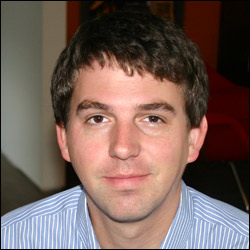
I authored and illustrated a book about phobias in the 4th grade that I’m quite proud of, even if it never landed with a major trade publisher. After that, I routinely made zines and self-published books, and eventually landed a job as a features editor at Universal Press Syndicate (now Andrews McMeel Syndication), the home of classic comic strips like Calvin & Hobbes, The Far Side, Cathy, Doonesbury, and others. Then in 2018, I joined the book group at Andrews McMeel Publishing, working mostly on illustrated humor books with occasional poetry or narrative nonfiction titles.
What was your career path like getting to your current role?
It was a bit haphazard since I lived outside of New York and was not nearly as connected as most publishing professionals. But I always had a curiosity and interest in books and would talk with authors and editors at comic cons, book fairs, and in our own company. Eventually, AMP President and Publisher Kirsty Melville recognized that interest and gave me the opportunity to work as a book editor.
What advice would you give to those who are either just starting out or are in their first few years in publishing?
Probably the same advice I still give myself today: Be patient and stick with it, try not to lose your sense of humor, and accept that there will be ups and downs. There will be difficult days where you question what you are doing, but also days where you see a fresh box of advance copies of a fantastic new book, or a starred review, or an email from a happy author, and it all feels worth it. Even if the learning curve can be painful at times, each difficult situation you face is an opportunity to master something new and conquer your fears of the unknown. And after a certain point, it’s best to shut off your computer or phone and just take a walk or get some sleep!
What have been some highlights of your career so far?
Working with all-pro NFL receiver Tyler Lockett to publish his debut book of poetry was a blast, including accompanying him to book launch events in Seattle. Helping Garry Trudeau design and produce his 50th anniversary Doonesbury publication was a monumental task. And working with webcartoonist Sarah Andersen on her recent bestselling book, Fangs, was a delight. Recently I have enjoyed preparing a few new children’s comic series for launch as well.
What is your favorite title that you’ve worked on?
I can’t pick favorites! But I have been thrilled by the rave reviews for Samantha Edwards’ debut middle-grade graphic novel, A Tale as Tall as Jacob (October 2021), which is about her experience growing up with a brother with ADHD. The book is an authentic, hilarious, and heartwarming portrait of one family’s journey toward accepting Jacob for the “tiny tornado” that he is. Samantha is a children’s librarian in my hometown of Kansas City who has long dreamed of publishing books, so helping a new author realize their dream has been a special thrill.
Issue: October Newsletter
Mentor: Dawn Ryan
Position: Executive Managing Editor
House: Macmillan Children’s Publishing Group
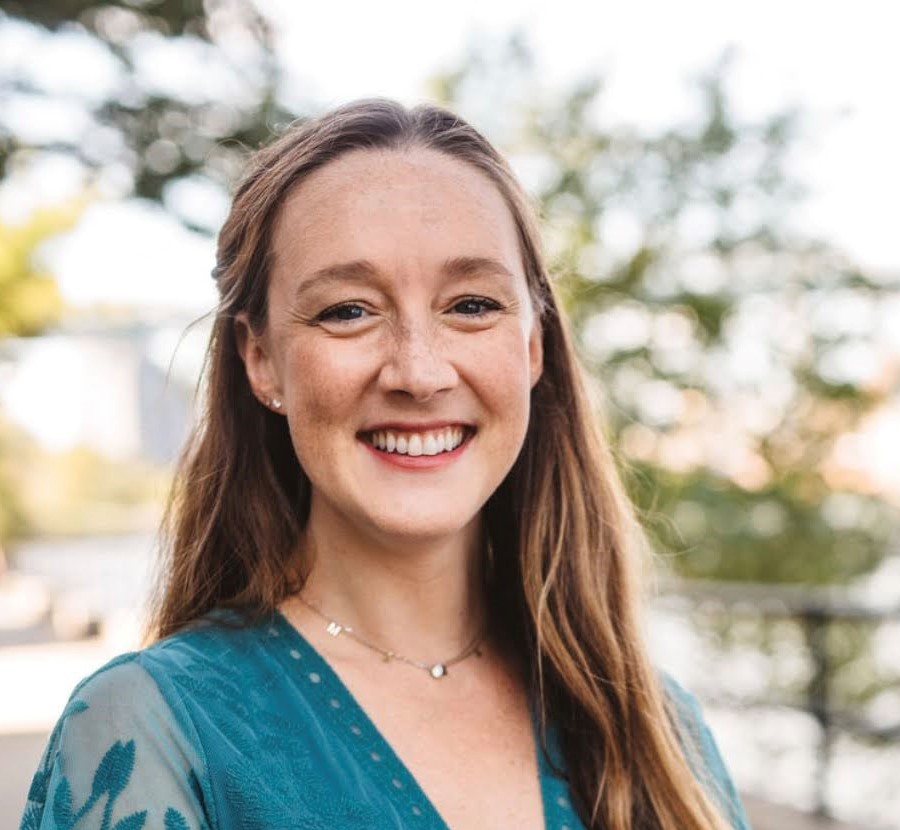
What brought you to publishing and what was your first job?
I always knew I wanted to be involved with writing and books, and both of my parents are teachers, so that easily could have been a route for me. But through a friend in college whose dad was at a publishing house, I got my first internship, which was at BEA setting up books on chairs for morning breakfasts with authors. It was nice being behind the scenes and seeing Judy Blume speak to a room for the first time. It was a lot of hard work, waking up at 5 AM doing grunt work publicity stuff, but seeing how many good-natured people were specifically in children’s publishing, I knew that it was going to be a really good fit for me. Everyone seemed really creative and happy but still business-minded, and that, ultimately, was how I knew I wanted to be in publishing.
What was the path that got you to this current role in your career?
It has not been linear. Basically, the path has been to say yes when people you know and respect offer you new opportunities that you’re interested in. I’ve spent time in marketing, publicity, and production editorial, and now managing editorial, with some brief time at a start-up as a development director, all just based on connections with people and an interest in growing and learning more about the industry.
It started with that internship at BEA, and then I started applying everywhere for more internships to land in an office setting rather than at a convention center. My next internship was at Fodor’s Travel Books, which was a part of Random House at the time, and it was on the production editorial side. It was a ton of style checking, making sure headings matched up throughout all of the books, making sure maps were current, and correction checking between passes. What really hooked me about the production editorial side was the production meetings, where people got together and gave the state of the union for every book they were working on. It was run by a managing editor who could guide the group to fix issues and make sure we had the best plan in place possible. It felt like such a teaching and coaching role, and I knew that was in my skill set and how I wanted to grow.
After that internship ended, it was really hard to find a job in publishing because this was during the 2009 and 2010 recession days, so when I graduated from college I started interviewing for everything and ended up on the marketing side, but still in children’s. And it was a wonderful time. Setting up meet-and-greets with authors, working at BEA once again, doing blogger campaigns (before influencers existed). Following that job I did school and library marketing, which felt like a really good fit because I have such a background with teachers, and it was. It involved a lot of mailings for award committees, outreach for the librarian and teacher network, and going to conventions.
Then, because of the Fodor’s internship and staying in touch with the people I’d reported to there, I found out about an opportunity with Random House Children’s for an Associate Managing Editor and I jumped back over into the managing editorial side, in children’s, and it was a really good fit. I stayed at Random House for about five years and then came to Macmillan, a job offering that I again found through a friend—I really liked the culture and the team and I was ready to grow.
A few years after joining Macmillan, someone who I’d known when I was in marketing was starting a new company, so I took a break from traditional publishing and worked as their development director. The startup was more about general entertainment. Book publishing was a piece of the work, but not all of it. It really opened my eyes—I went from managing production schedules and the work I did in managing editorial to negotiating contracts and helping with stylistic decisions. It was an amazing challenge, but ultimately one that I knew would lead to a lot of burnout, so I went back into more traditional publishing. Because of that experience, I knew how to advocate for myself and what workload and work-life balance was right for me, and I became much more self-aware and able to communicate what my career path was going to be. And I’m back at Macmillan now!
What advice would you give to those who are either just starting out or are in their first few years in publishing?
Be as open to new people and experiences as possible. Don’t be afraid to ask someone if they want to go to lunch or to ask them how they got where they are. I think publishing is a friendly place to be, and you’re not doing yourself justice if you’re limiting yourself just to your day-to-day tasks. And it’s also the generosity of spirit. If you’re an open person, things are going to come back around to you. That’s the way the world works, and when you have that mentality and things come your way, just say yes. If you think your gut is up for it, do it. Not everything is going to be perfect, but you’re going to learn from it and you’re going to be stronger from it. So if you’re interested in something, make your pro-con lists and then jump!
What have been some highlights of your career so far?
Quitting. It was one of the scariest things I’ve done in my life, but I am so glad I did it. The job was overwhelming and toxic for me, and the power to get out and take care of yourself is stronger than anything else. It’s better than a paycheck. Know your value and know your worth. That’s probably the best thing I’ve ever done in my career. Besides that, I love getting to see people grow. Being there for others, giving them advice, and then hearing that things are working out. At the end of the day, we’re all people. Yes, we want to be successful, and seeing the people around you move up and have success just means that you’re doing well too. Why wouldn’t you want other people to thrive?
What is your favorite title that you’ve worked on?
I got to be the managing editor for Book of Dust, which was Philip Pullman’s first book after twenty years of not publishing in children’s. It was a big, top-secret project. It went on sale on a Thursday, which never happens—we had to time it to the UK—so logistically there was a lot of work to be done on the managing editorial side to coordinate. There was such a sense of magic because he’s such a prolific writer and a fantastic person and mind. It was really humbling to be able to work on that book.
In a similar way now, I love being able to work on all of the new and diverse writers that we have coming, even if they aren’t a giant name like Philip Pullman. It’s so important to get more voices out there. Any time there’s a book that comes across my desk with perspectives that I don’t have, I’m so touched that I get to help put it into the world and that more people are learning about marginalized communities who don’t necessarily have generations of publishing behind them. It’s great to be helping people who are underrepresented. For example, Eva Chen has a new book that I worked on, I Am Golden, coming out, and it’s a forty-eight-page picture book about her own experience. She has a Chinese-American background and the book talks about all the generations that came before her main character and how proud they are of her. She’s just a little girl but she’s guiding her parents through an entirely new culture and life, and it’s really powerful. It’s great to be a part of something like that.
If you were in a room with a large group of people early in their careers, what would you want to say to them?
No one is going to come save you. You are your own champion. It’s important to talk to mentors and get help, but you have to value yourself and you have to make your future, what you want to do, and how you want to grow your first priority. And then it’s easier for other people to recognize that too. It’s really easy, especially now in the confusing work-from-home in-between times, to feel really isolated, and you have to get yourself out of the funk. Find a new person to talk to, find a new way to be creative online. You have to take care of yourself!

